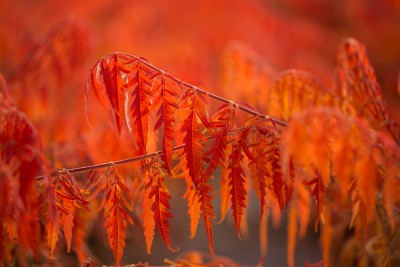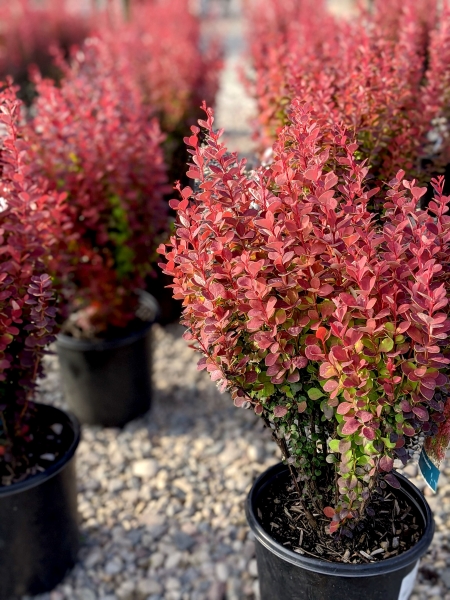
Landscape Shrubs for Autumn Color
Discover beautiful fall shrubs for your garden now! We can help you choose plants with amazing autumn colors. Don’t wait, add these shrubs and keep the colors going all the way to the snowfall!
Tiger Eyes® Cutleaf Staghorn Sumac


This sumac grows about 6′ wide and 6′ tall and the foliage is beautiful all season long! The brilliant chartreuse green foliage is in the summer giving way to the fall when it’s leaves turns orange, yellow, and scarlet color. This plant definitely has an oriental look to it! It’s drought resistant, can take full sun, and is a zone 4 so it will survive the winters here!
Photos: Courtesy of Bailey Nursery
Orange Rocket Barberry (Really any barberry!

We wanted to add this shrub because it provides color from spring through fall. The new leaves come out coral orange, turn green, and then a bright red in the fall, always adding warmth and a pop of brightness to your landscape. It grows 4′-5′ tall and 2′-3′ wide and likes full to partial sun. Tolerant of most soils other than slow draining/wet areas. Can take drought conditions once established and great can tolerate road salts and pollution well. Most barberries have wonderful fall color transitions so check out barberry as a great barrier plant in your contemporary or rustic garden.
Bailey Red Twigged Dogwood
This one we are also focusing further than the fall season. We don’t want to take away from the adorable white berries that adorn the plant in late summer but sometimes it’s what’s within that gives the real beauty. The dropping of its dramatic red and orange foliage in fall reveals bright red twigs that stand upright against the mostly colorless landscape. They can get fairly big at 9′ tall and 5′ wide. It’s great for mass planting, in wetter areas, and its roots work well to create an embankment for erosion control. Plant in full to partial sun and hopefully somewhere you see often in the winter! Really easy care and cutting back old stems in the spring will give you the best color on new growth.
Winter photo: Courtesy of Monrovia
Spirea

Spirea is a spring/summer flowering shrub that works well for your border plantings and provides spring blossoms as well as great fall foliage. Some spirea varieties can also bloom spring and fall. Two Spirea came to mind when thinking of fall color. Magic Carpet Spirea (See image on the right ) that turns a rich russet red in the fall after its summer season mature bright gold foliage or the Tor Birchleaf Spirea that turns gold, red, and purple in the fall. The Tor Birchleaf grows in compacted mounds and is deer-resistant, fragrant, and attracts butterflies. The Magic Carpet grows full and bushy, is an early bloomer, and has the brightest colors in full sun. Planting them en masse and pairing them with other perennials would create a more dramatic effect on your landscape. Ask us about which varieties can be pruned after first flowering to try for continued blooming into fall.
Left photo: Courtesy of Behnkes
There are many plants, other than shrubs, that can provide you with extended seasonal color and eye appeal in your landscape or garden. The garden is an evolving thing so when you have time to take tabs on when plants are blooming or changing color, why not add more plants for fall interest?



